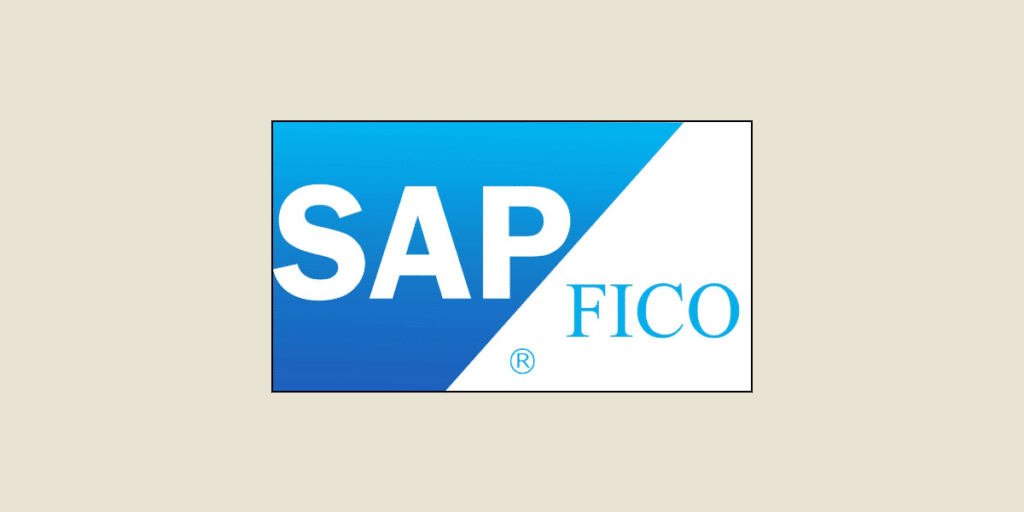Between legislative upheavals, strong competition, cost variations, and changes in consumer behavior, the financial health of companies is subject to numerous fluctuations. To cope with this, good financial management is essential. But it is often found at the crossroads of several disciplines, particularly finance, accounting, and management control. This is why SAP has brought together all these specialties within a unique training: SAP FICO.
Combining the SAP Financial Accounting (FI) and SAP Controlling (CO) modules, it aims to help companies better manage their financial accounting and reporting. Here is a focus on SAP Finance and Controlling.
SAP FICO - The Union of Two Modules
SAP FICO is the contraction of two terms: Finance and Controlling. In other words, the two flagship modules of SAP in terms of financial and accounting management. From financial data management to reporting analytics, regulatory compliance verification, budget planning, and strategic decision-making, these modules handle all aspects of FICO. They fully leverage SAP tools to optimize financial management. Thanks to the reliable real-time data provided, companies have all the keys in hand to ensure their financial success.
Originally, SAP FI and SAP CO were designed as two distinct modules. But it is clear that most users utilize them as a single module. After all, financial reporting and performance optimization are inseparable from good cost management.
Beyond strictly financial modules, SAP FICO also integrates perfectly with other modules, such as purchasing, inventory management, production, quality, sales, and more. All contribute to the overall performance of companies.

SAP FI - Focus on Finance
If SAP FICO brings together both the SAP FI (Finance) and SAP CO (Controlling) modules, it maintains the specificities of each. And for good reason, they both serve their own financial processes.
Let’s start by studying the SAP Finance module, which deals with the company’s general and financial accounting. More precisely:
- The general ledger: this is the company’s general accounting (like the chart of accounts with the balance sheet, the income statement, etc.). Often, this information is first transcribed within the secondary modules below.
- Customer accounting: the recorded accounting entries cover all transactions with customers. For example, advances, receivables, sales, invoices, credits, reminders, etc. They are then updated in the general ledger.
- Vendor accounting: here you will also find invoices, credits, advances, automatic payments, etc., but on the vendor side.
- Fixed asset accounting: this involves classifying all of the company’s assets. For example, real estate, machinery, buildings, etc. They are then recorded at the level of entries, exits, transfers, sales, not forgetting the depreciation calculation and possible revaluations.
- Bank accounting: this concerns cash management, processing receipts, and disbursements.
- Special ledgers: they are used specifically for financial reporting, allowing the company to analyze its performance and make better decisions.
- Other modules: such as consolidation, budget accounting, or travel expense management.
Overall, the SAP FICO financial accounting module enables monitoring, controlling transactions, managing reporting, ensuring accounting compliance, and guaranteeing information transparency.

SAP CO - Focus on Controlling
SAP CO focuses on planning and supervising costs. The idea is to analyze the resource needs of the various production factors and services of the company.
Again, this SAP FICO module includes several components:
- Accounting nature: this is the basis of cost accounting. It provides an overview of cost centers, management processes, projects, or orders to better allocate expenses.
- Product costs: this module facilitates the evaluation of production prices. The company can thus analyze the added value of each of its products and/or services.
- Profit and loss analysis: it is not only about publishing past financial results but also planning future ones. Thanks to this transparency, other departments are better able to make informed decisions for higher profitability.
- Cost centers: this involves analyzing overheads. In other words, the costs associated with an internal department (sales, marketing, HR, etc.).
- Profit centers: this involves analyzing the expenses associated with an internal department and its products.
- Internal orders: these allow for pre-budgeting and managing small internal projects.
Through a fine analysis of costs, SAP CO directly contributes to improving the company’s profitability.
Train Yourself in SAP FICO
To train yourself in SAP FICO, several options are available to you.
You can take courses and certifications provided by the SAP company, including:
- S4F01: Financial Accounting in SAP S/4HANA for SAP ERP FI professionals
- S4F60: Introduction to SAP Central Finance
- BR235: SAP Convergent Charging 5.0
- S4F20: Management Accounting Processes in SAP S/4HANA











